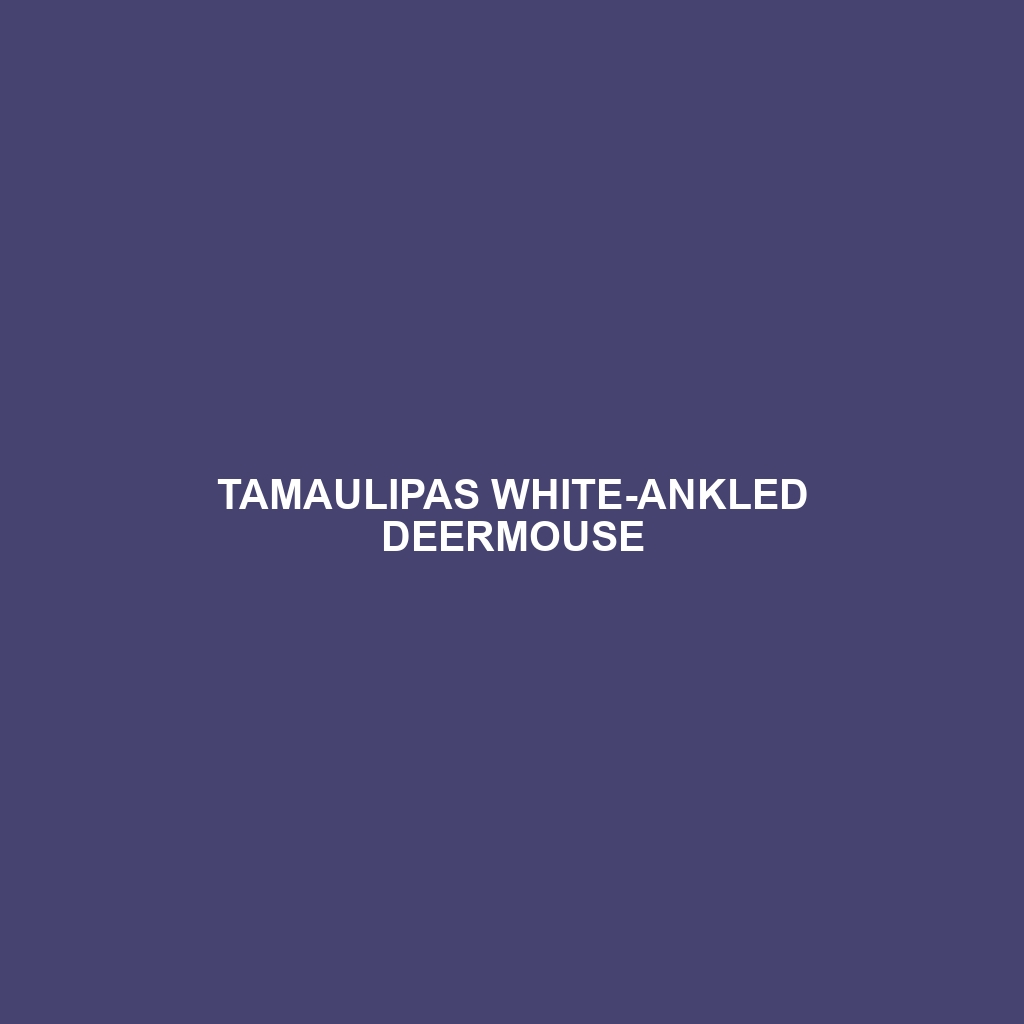Tamaulipas White-ankled Deermouse
Common Name: Tamaulipas White-ankled Deermouse
Scientific Name: Peromyscus aztecus
Habitat
The Tamaulipas White-ankled Deermouse is primarily found in the Tamaulipas region of Mexico, particularly in areas characterized by subtropical forests, brushlands, and grasslands. Its preferred habitats include mesquite thickets and tropical deciduous forests, where it can find shelter and forage effectively. This species is often located at lower elevations and is adapted to the unique climate of northeastern Mexico.
Physical Characteristics
This small rodent typically measures about 15 to 23 cm in length, including its tail, which is about the same length as its body. The Tamaulipas White-ankled Deermouse features a distinctively light brown or grayish coat with white underparts. Its most notable characteristic is the white fur on its ankles, which helps distinguish it from similar species. Other features include large eyes, rounded ears, and a long, slender tail, aiding in its agility.
Behavior
Tamaulipas White-ankled Deermice are primarily nocturnal creatures, exhibiting high activity during the night. They are known for their agile movements and tend to be solitary, coming together only for mating purposes. These mice are also keen climbers, which allows them to navigate their forest habitats in search of food and shelter.
Diet
The diet of the Tamaulipas White-ankled Deermouse consists mainly of seeds, fruits, fungi, and insects. This omnivorous diet enables them to adapt to various environmental changes. Their foraging habits are particularly important in their ecosystem, as they play a role in seed dispersion and contribute to the nutrient cycle.
Reproduction
Breeding typically occurs during the warmer months, with the peak season in the spring and early summer. Female Tamaulipas White-ankled Deermice can give birth to litters of about 3 to 6 offspring after a gestation period of approximately 25 days. Offspring are weaned after a few weeks and start to become independent shortly thereafter. Social behaviors during mating often include vocalizations and scent marking.
Conservation Status
The Tamaulipas White-ankled Deermouse is currently listed as vulnerable due to habitat destruction and environmental changes. Conservation efforts are essential to protect this unique species from further decline and to ensure its survival in its native habitats.
Interesting Facts
Did you know that the Tamaulipas White-ankled Deermouse has a particularly strong sense of smell, which it uses to locate food and communicate with others of its kind? Additionally, this species is capable of adapting to disturbed environments, making it resilient to some extent.
Role in Ecosystem
The Tamaulipas White-ankled Deermouse plays a crucial role in its ecosystem by acting as both a herbivore and prey for various predators. Its feeding habits promote the growth of plants by aiding in seed dispersal, while its presence in the food chain supports the survival of predators such as hawks and snakes. Thus, this species contributes to biodiversity and ecological balance in its native habitats.
